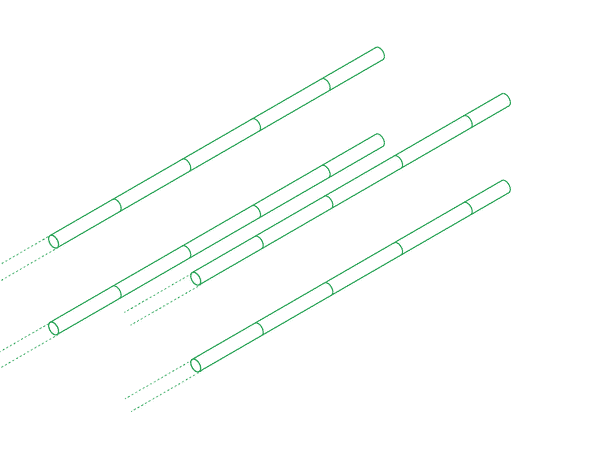
Stories
Planning in the virtual world
When presenting an architectural design, you used to have to rely on the client’s imagination. Virtual reality technology can take the visualization of proposed designs to a whole new level, making communication between architects and clients much easier.

All you need to enter a completely different world is a pair of glasses. Virtual reality glasses such as Oculus Rift from Oculus VR, the Vive model from HTC or the Cardboard from Google bring digital worlds to life. The user dives headfirst into the experience, feels actively involved and can interact with elements of this virtual world.

The technology is mostly used in computer games, where they create realistic gaming experiences. Due to its impressive user experience, the French designer and 3D planner Oliver Demangel predicted in an interview with the architecture magazine dezeen that virtual reality could be as addictive as cocaine. VR glasses and helmets create such a convincing effect that users can completely block out their real surroundings. That’s where virtual reality differs from augmented reality, where virtual elements are blended with the real world: using special programs, two-dimensional images are transformed into three-dimensional objects that can move around in our world.
The industry has begun to understand that virtual reality is not limited to the gaming scene, but can be very helpful when it comes to visualizing and imagining designs. The technology is already being used in product development as well as air and space travel. The construction industry is also profiting from this new technology, which facilitates communication between various people involved in a project.
Scale and alignment can be experienced

Up until now, planners have been limited to visualizing their drafts in flat images or videos. The client must be able to imagine these in their mind’s eye. As not everyone is able to imagine these details, there is a high risk of misunderstandings and changes later on down the line.
Virtual reality makes forms, dimensions, scales, alignments and the optical combinations of various elements much more easily perceptible for the user. VR glasses facilitate digital access to the building in the planning phases. Clients get a physical understanding of the building before the construction phase begins. A whole range of design decisions can be played out with them, plans can be made in real time.
In May of this year, the American architecture and design office NBBJ got together with the tech start-up Visual Vocal to develop a virtual reality production platform. The platform is set to be made accessible to project participants at various locations, in order to receive faster feedback on collaborative designs. In the meantime, the platform will also be used for client communication and, in the long-term, it should be available throughout the whole construction industry.
Presentation and discussion in the digital world

It’s taking off in Germany as well: in Leipzig, digital agency Mikavaa is working on interactive virtual reality presentations for the construction industry, and has developed the REVIZ program. This web-based application is fed with CAD files that show the current status of the design. REVIZ turns this data into a simple visualization with a 360 degree panorama or interactive virtual reality environment. For the latter, there is an App and virtual reality headset. Users can then add comments, questions and requests to specific points in the design, which can then be linked to a “to do” list during the ongoing administration process. REVIZ links all project participants together, and allows a design to be both presented and discussed in the virtual world.
For architects, virtual reality will change their design processes by allowing faster, direct, detailed feedback from clients. This will not only speed up the planning phase, but also avoid changes at a later date, which can often be expensive. Experts believe that architects could soon be designing in the virtual world using these glasses. Two-dimensional planning as we know it could be obsolete.
The experience for planners and clients could soon become more intense as the technology develops: higher-performance virtual reality glasses, higher resolution and a wider field of vision will reinforce the feeling of immersion – the feeling that you really are within a virtual 3D world.

